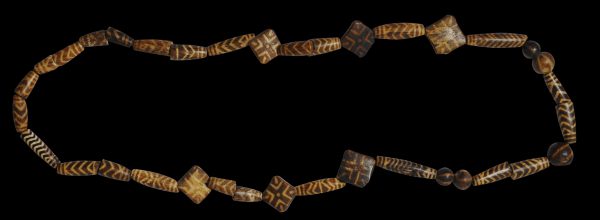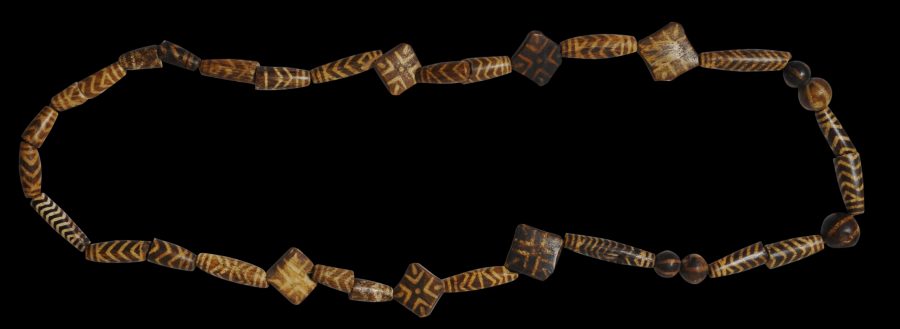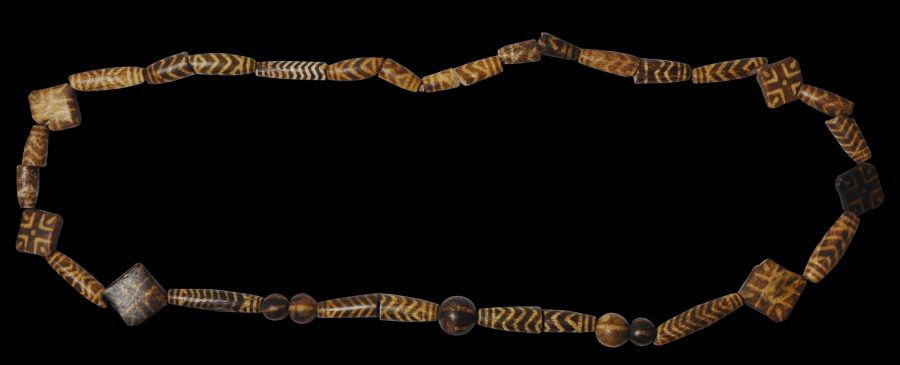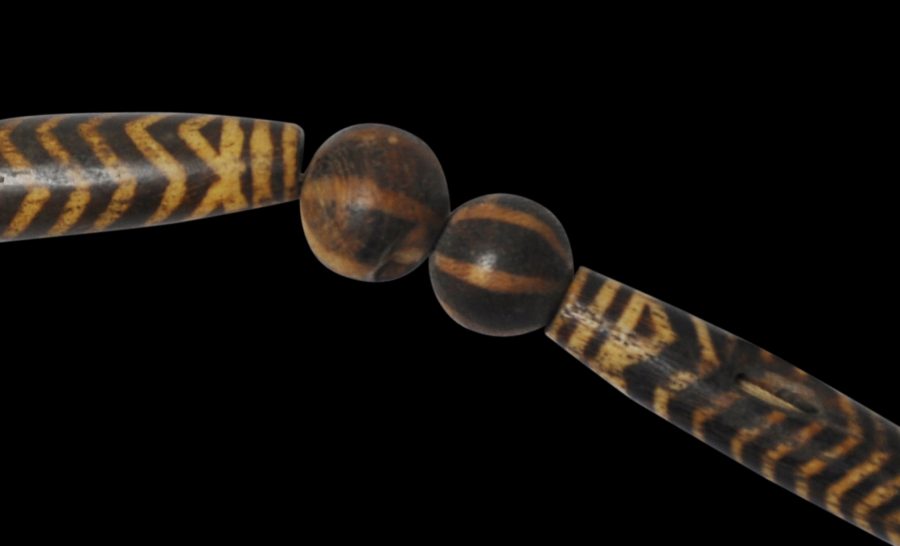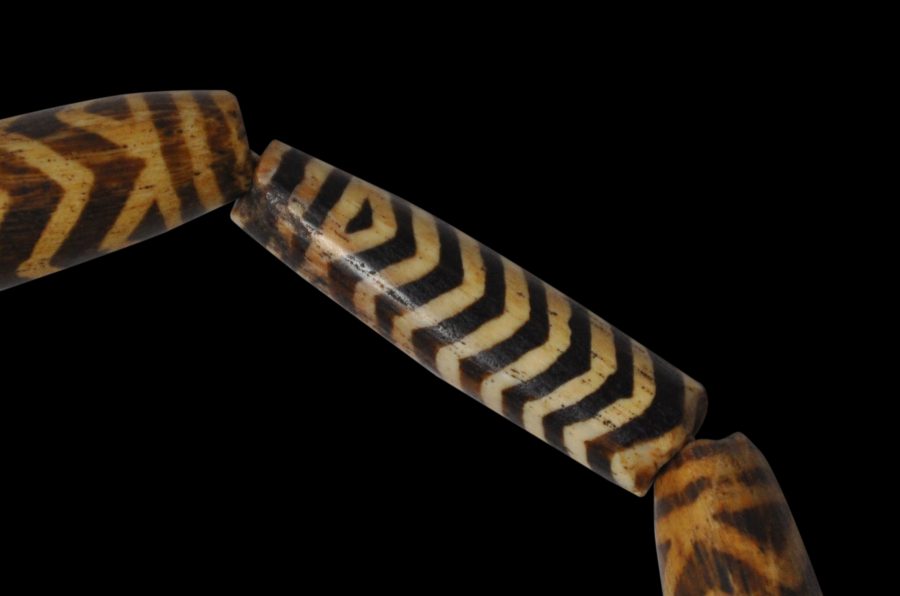This necklace comprises approximately 30 rare spherical, cylindrical and square beads of etched opalised or fossilised palmwood (fossilised palmwood is known as pumtek, ‘buried thunderbolts’).
This type of bead is one of the more remarkable beads in South and Southeast Asia given their scarcity and the longevity of their heirloom tradition. They come from the fossilised or opalised wood of a certain type of palm (borasus flabellifer) and are decorated with white geometric designs against a purposefully darkened base in a way that seems informed by the Dzi beads that became popular in Tibet. Like Dzi beads, they appear to be attributed with talismanic or protective properties.
The beads were made in Waddi, a walled town of the Pyu, the Indianised founders of the first state in what became Burma (Myanmar) which lasted from the fifth to the thirteenth century AD. The main buyers at the time of the beads appear to have been the Chin people, who still live today in Western Burma. The Chin used pumtek beads in marriage ceremonies and were an important part of complex Chin inheritance systems.
Latterly, the Mizo people of Indian’s Mizoram state (formerly a part of Assam state) also took to wearing pumtek beads which are believed to have originated with the Pyu kingdom.
See Richter (2000, p. 74) and Untracht (1997, p. 149) for a related pumtek bead necklace.
Some of the beads here are broken in two; others appear to comprise two halves of unrelated beads. This seems a product of the archaeological nature of these beads. The beads are threaded on a native twine. The necklace is stable and wearable.

A Chin woman from Western Burma wearing a pumtek bead necklace, circa 1880.
References
Francis, P., Asia’s Maritime Bead Trade: 300 BC to the Present, University of Hawai’i Press, 2002.
Richter, A., The Jewelry of Southeast Asia, Thames & Hudson, 2000.
Untracht, O., Traditional Jewelry of India, Thames & Hudson, 1997.


